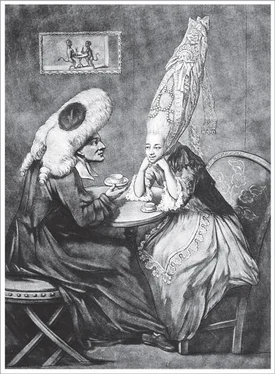Bill Bryson - At Home
Здесь есть возможность читать онлайн «Bill Bryson - At Home» весь текст электронной книги совершенно бесплатно (целиком полную версию без сокращений). В некоторых случаях можно слушать аудио, скачать через торрент в формате fb2 и присутствует краткое содержание. Жанр: Старинная литература, на английском языке. Описание произведения, (предисловие) а так же отзывы посетителей доступны на портале библиотеки ЛибКат.
- Название:At Home
- Автор:
- Жанр:
- Год:неизвестен
- ISBN:нет данных
- Рейтинг книги:4 / 5. Голосов: 1
-
Избранное:Добавить в избранное
- Отзывы:
-
Ваша оценка:
- 80
- 1
- 2
- 3
- 4
- 5
At Home: краткое содержание, описание и аннотация
Предлагаем к чтению аннотацию, описание, краткое содержание или предисловие (зависит от того, что написал сам автор книги «At Home»). Если вы не нашли необходимую информацию о книге — напишите в комментариях, мы постараемся отыскать её.
At Home — читать онлайн бесплатно полную книгу (весь текст) целиком
Ниже представлен текст книги, разбитый по страницам. Система сохранения места последней прочитанной страницы, позволяет с удобством читать онлайн бесплатно книгу «At Home», без необходимости каждый раз заново искать на чём Вы остановились. Поставьте закладку, и сможете в любой момент перейти на страницу, на которой закончили чтение.
Интервал:
Закладка:
Bissell and his partners had more mixed fortunes, and at a decidedly more modest level. The Seneca Oil Company made money for a while, but in 1864, just five years after Drake’s drilling breakthrough, it could no longer compete and went out of business. Drake squandered the money he made and died soon after, penniless and crippled by neuralgia. Bissell did much better. He invested his earnings in a bank and other businesses, and accrued a small fortune—enough to build Dartmouth a handsome gymnasium, which still stands.
While kerosene was establishing itself as the illuminant of choice in millions of homes, particularly in small towns and rural areas, it was challenged in many larger communities by another wonder of the age: gas. For the well-to-do in many large cities, gas was an additional option from about 1820. Mostly, however, it was used in factories and shops and for street lighting, and didn’t become common in homes till closer to the middle of the century.
Gas had many drawbacks. Those who worked in gas-supplied offices or visited gaslit theaters often complained of headaches and nausea. To minimize that problem, gaslights were sometimes erected outside factory windows. Indoors, gas blackened ceilings, discolored fabrics, corroded metal, and left a greasy layer of soot on every horizontal surface. Flowers wilted swiftly in its presence, and most plants turned yellow unless isolated in a terrarium. Only the aspidistra seemed immune to its ill effects, which accounts for its presence in nearly every Victorian parlor photograph. Gas also needed some care in use. Most gas-supply companies reduced gas flow through their pipes during the day when demand was low. So anyone lighting a gas jet during the day had to open the tap wide to get a decent light. But as the pressure was stepped up later in the day, the light could flare dangerously, scorching ceilings or even starting fires, wherever someone had forgotten to turn down the tap. So gas was dangerous as well as dirty.
Gas had one irresistible advantage, however. It was bright—at least compared with anything else the pre-electric world knew. The average room with gas was twenty times brighter than it had been before. It wasn’t an intimate light—you couldn’t move it nearer your book or sewing as you could a table lamp—but it provided wonderful overall illumination. It made reading, card playing, and even conversing more agreeable. Diners could see the condition of their food; they could find their way around delicate fish bones and know how much salt came out the hole. One could drop a needle and find it before daylight. Book titles became discernible on their shelves. People read more. It is no coincidence that the mid-nineteenth century saw a sudden and lasting boom in newspapers, magazines, books, and sheet music. The number of newspapers and periodicals in Britain leaped from fewer than 150 at the start of the century to almost 5,000 by the end of it.
Gas was particularly popular in America and Britain. By 1850 it was available in most large cities in both countries. Gas remained, however, a middle-class indulgence. The poor couldn’t afford it, and the rich tended to disdain it—partly because of the cost and disruption of installing it, partly because of the damage it did to paintings and precious fabrics, and partly because when you have servants to do everything for you already there isn’t the same urgency to invest in further conveniences. The ironic upshot is that not only middle-class homes but also institutions like lunatic asylums and prisons tended to be better lit—and, come to that, better warmed—long before England’s stateliest homes were.
Keeping warm remained a challenge for most people right through the nineteenth century. Our Mr. Marsham had a fireplace in virtually every room of his rectory, even the dressing room, in addition to a hefty kitchen stove. Cleaning, laying, and stoking such a number must have been enormous work, yet for several months of the year the house was almost certainly uncomfortably cold. (It still is.) Fireplaces just aren’t efficient enough to keep any but the smallest spaces warm. This could be overlooked in a temperate place like England, but in the frigid winters of much of North America the fireplace’s inadequacies at projecting warmth into a room became numbingly apparent. Thomas Jefferson complained that he had to stop writing one evening because the ink had frozen in his inkwell. A diarist named George Templeton Strong recorded in the winter of 1866 that even with two furnaces alight and all the fireplaces blazing, he couldn’t get the temperature of his Boston home above 38 degrees Fahrenheit.
It was Benjamin Franklin, predictably enough, who turned his attention to the matter and invented what became known as the Franklin (or Pennsylvania) stove. Franklin’s stove was an undoubted improvement, though more on paper than in practice. Essentially, it was a metal stove inserted into a fireplace, but with additional flues and vents that ingeniously redirected air flow and wafted more heat back into the room. But it was also complex and expensive and brought great—often intolerable—disruption to every room in which it was installed. The heart of the system was a second, rear flue, which proved to be impossible to sweep unless it was fully dismantled. The stove also required an under-floor cool-air vent, which in practical terms meant the stove couldn’t be installed in upstairs rooms or where there was a basement below, disqualifying it from many houses altogether. Franklin’s design was improved upon in America by David Rittenhouse and in Europe by Benjamin Thompson, Count Rumford, but real comfort came only when people sealed off their fireplaces and brought a stove fully into the room. This kind of stove, known as a Dutch stove, smelled of hot iron and dried out the atmosphere, but at least it kept the occupants warm.
As Americans moved west into the prairies and beyond, an absence of wood for fuel caused problems. Corncobs were widely used, as were dried cow pies—known euphemistically and rather charmingly as “surface coal.” In wilderness areas, Americans also burned all kinds of fat—hog fat, deer fat, bear fat, even the fat of passenger pigeons—and fish oils, though all these were smoky and stank.
Stoves became something of an American obsession. By the early twentieth century more than seven thousand types had been registered with the U.S. Patent Office. The one quality all had in common was that they took quite a lot of work to keep going. A typical stove in 1899, according to a study in Boston, burned some three hundred pounds of coal in a week, produced twenty-seven pounds of ash, and required three hours and eleven minutes of attention. If one had stoves in both kitchen and living room, as well perhaps as open fires elsewhere, that represented a lot of extra work. One other significant drawback of enclosed stoves was that they robbed the room of a good deal of light.
The combination of open flames and combustible materials brought an element of alarm and excitement to every aspect of daily life in the pre-electric world. Samuel Pepys recorded in his diary how he bent over a candle while working at his desk, and soon afterward became aware of a horrible, pungent smell, as of burning wool; only then did he realize that his new and very expensive wig was impressively aflame. Such small fires were a common occurrence. Nearly every room of every house had open flames at least some of the time, and nearly every house was fabulously combustible, since almost everything within or on it, from straw beds to thatched roofs, was a fuel in waiting. To reduce dangers at night, people covered fires with a kind of domed lid called a coverfeu (from which comes the word curfew ), but danger could never be entirely avoided.
Technological refinements sometimes improved the quality of light, but just as often increased the risk of fire. Because their fuel reservoirs had to be elevated to assist the flow of fuel to the wick, Argand lamps were top-heavy and therefore easily knocked over. And kerosene fires were almost impossible to put out. By the 1870s such fires were killing as many as six thousand people a year in America alone.
Читать дальшеИнтервал:
Закладка:
Похожие книги на «At Home»
Представляем Вашему вниманию похожие книги на «At Home» списком для выбора. Мы отобрали схожую по названию и смыслу литературу в надежде предоставить читателям больше вариантов отыскать новые, интересные, ещё непрочитанные произведения.
Обсуждение, отзывы о книге «At Home» и просто собственные мнения читателей. Оставьте ваши комментарии, напишите, что Вы думаете о произведении, его смысле или главных героях. Укажите что конкретно понравилось, а что нет, и почему Вы так считаете.












